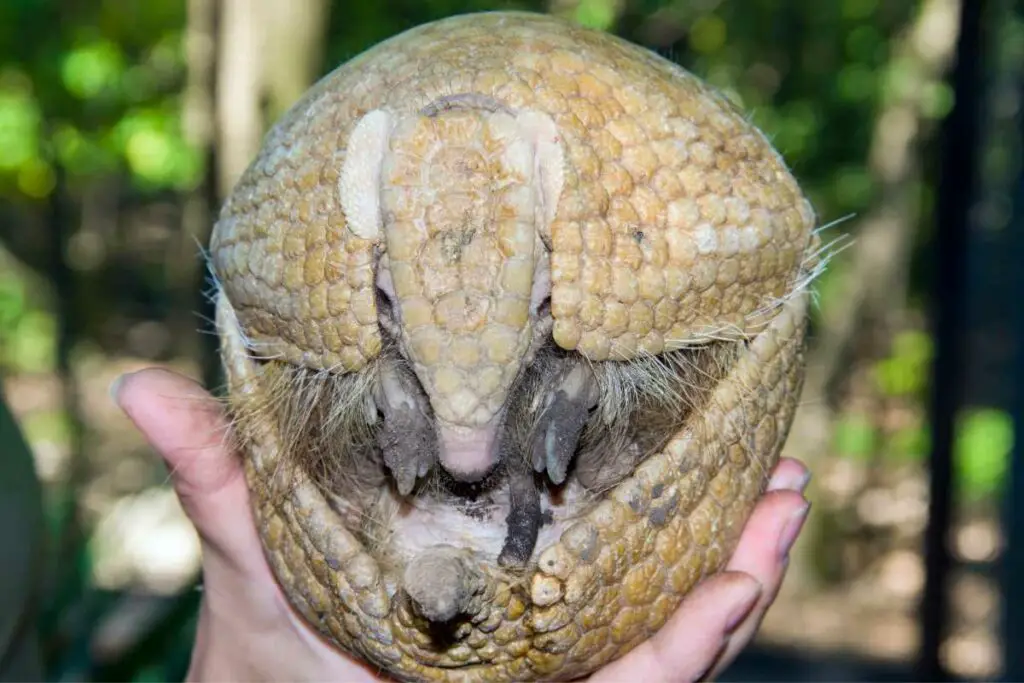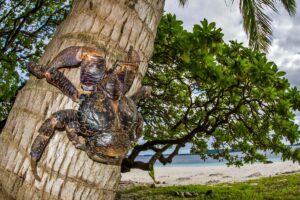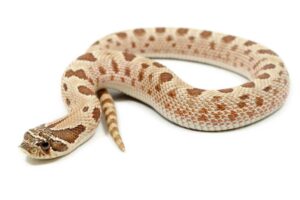The armadillo ranks up there with the echidna and the platypus for odd animals.
With a mishmash of features such as a scaly, accordion-like back, a pointed snout, and thick, taloned feet, the armadillo seems more a creature made in a fictional lab than a vital part of the natural ecosystem.
As odd an animal as the armadillo, what about its young? Do armadillos lay eggs, like echidnas and platypuses, or do they give live birth like mammals? And are baby armadillos as odd and strangely adorable as their parents?
These desert-dwelling placental mammals (yes, mammals, despite the scaly shell) do not lay eggs, and give live birth like other mammalian species.
Read on to learn more about the armadillo, its life cycle, and how it gives birth.
Table of Contents
Do Armadillos Lay Eggs?
Though they’re scaly and live in the desert, armadillos do not lay eggs. They give live births in a burrow during the month of March after a gestation of between 60 – 120 days.
However, armadillos are one of the few animals that have delayed implantation (diapause) – meaning that the male armadillo sperm lives in the female’s body for weeks or sometimes months before fertilizing her egg.
And yes, we used the singular “egg” for a reason – armadillos give birth to four identical quadruplets, all formed from the same egg and sperm.
Basic Facts about the Armadillo
Armadillo – a Spanish word meaning “little armored ones” – is a placental mammal of the New World variety, and originate from both North and South America.
There are two main families of armadillo, all species of which live birth to live young: the families Dasypodidae and Chlamyphoridae. Those species in the family Dasypodidae are those that give birth to four identical quadruplet offspring, while those in the Chlamyphoridae family do not.
- Dasypodidae
- Nine-banded armadillo – the only armadillo species native to North America
- Seven-banded armadillo
- Llanos armadillo
- Southern long-nosed armadillo
- Greater long-nosed armadillo
- Hairy long-nosed armadillo
- Yepe’s mulita
- Chlamyphoridae
- Greater fairy armadillo
- Pink fairy armadillo
- Screaming hairy armadillo
- Big hairy armadillo
- Andean hairy armadillo
- Yellow armadillo
- Pichi (aka dwarf/pygmy armadillo)
- Northern naked-tailed armadillo
- Southern naked-tailed armadillo
- Chacoan naked-tailed armadillo
- Greater naked-tailed armadillo
- Giant armadillo
- Southern armadillo (three banded)
- Brazilian armadillo (three banded)
Armadillo Characteristics
Armadillos are best known for the following characteristics, which all species have in common:
- Leathery, banded shell
- Clawed feet (for digging and foraging)
- Short, stubby legs
- Pointed snout
Where do Armadillos Live?
Most armadillo species prefer dry climates with sandy or clay soil, which is easier for burrowing. They can be found in deserts, coastal dunes, pine forests, prairies, hardwood forests, and salt marshes.

What Armadillo Species Live in the United States?
Only one armadillo species is native to North America – the nine-banded armadillo, also known as the long-nosed armadillo. The nine-banded armadillo lives in the southern United States such as Texas, Louisiana, Georgia, Alabama, and Mississippi.
How do Armadillos Reproduce?
Depending on the species, armadillos reach sexual maturity between six and twelve months of age. Mating season for most armadillo species is between June and August, with offspring born in March or April.
Delayed implantation – or diapause – occurs in female armadillos and is defined as the sperm living inside the female’s body for months before fertilizing the egg.
While mating season is during the summertime, implantation doesn’t occur until the late fall (usually November) and the young are born four months later.
All About Armadillo Babies
Unlike many mammals, whose offspring are born with their eyes closed, armadillo young are born with their eyes open and weigh about 3 – 4 ounces each.
Armadillos in the family Dasypodidae give birth to four identical quadruplets formed from the same egg. Chlamyphoridae offspring are typically born in litters of one to eight, none of which are usually identical.
Female armadillos only have one litter per year and can have up to 12 – 13 litters in her lifetime (more if raised in captivity), as the lifespan of the average armadillo in the wild is between 10 and 14 years.
Conclusion
While armadillos are scaly, they are mammals that give birth to live young and don’t lay eggs.
They are fascinating creatures that are found all throughout South America and in the southern region of North America, with a wide variety of species with their own unique characteristics.
Frequently Asked Questions
Do armadillos lay eggs?
No. Armadillos are placental mammals and give birth to live young that are born in a burrow in March or April.
Do armadillos roll into a ball when scared?
Only the three-banded armadillo from the genus Tolypeutes is flexible enough to roll into a ball. Other species will jump into the air if startled.
Do all armadillos have hair?
As mammals, all armadillo species have some hair. However, some species are certainly hairier than others. Those in the family Chlamyphoridae typically have more hair than those in the Dasypodidae.
Conclusion
As their names suggest, the screaming hairy armadillo and the big hairy armadillo are known for their hair so much that the characteristic is in their common name.











